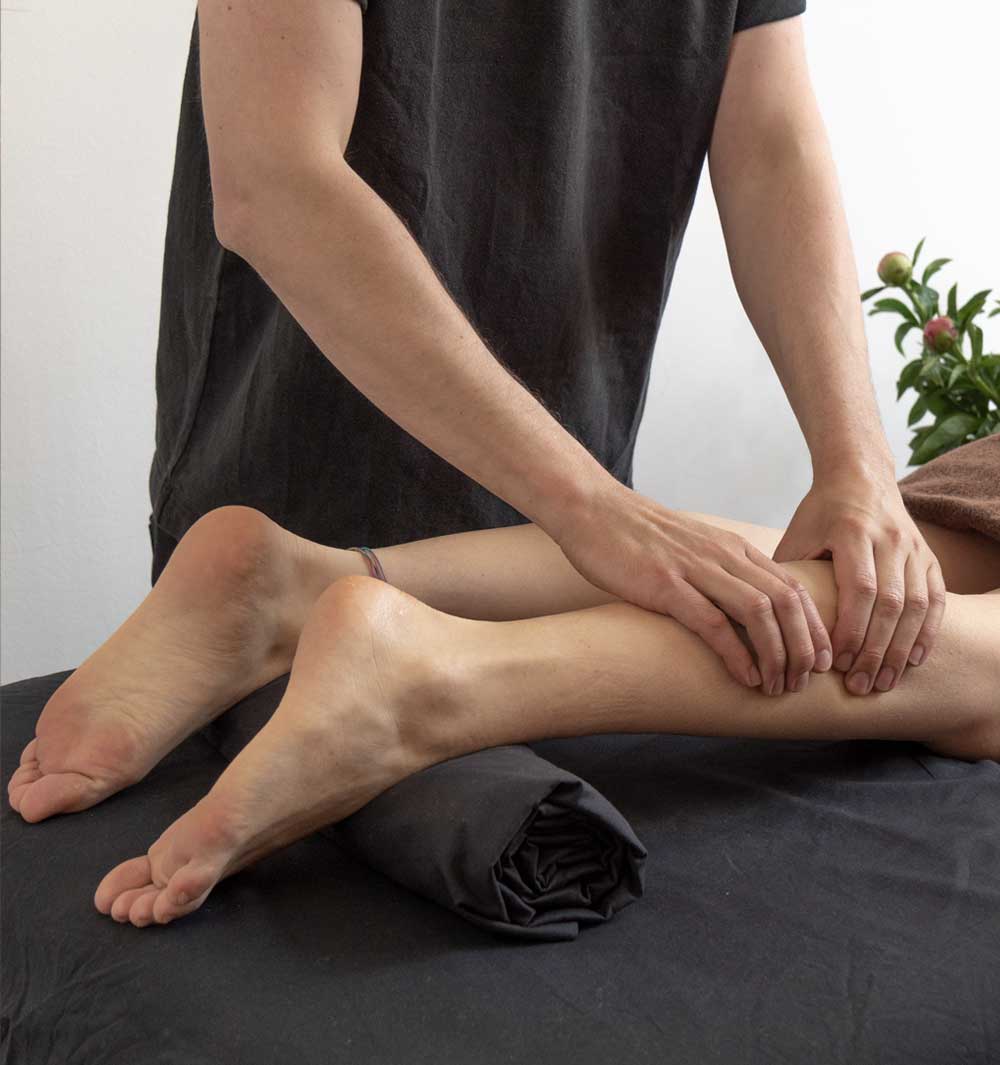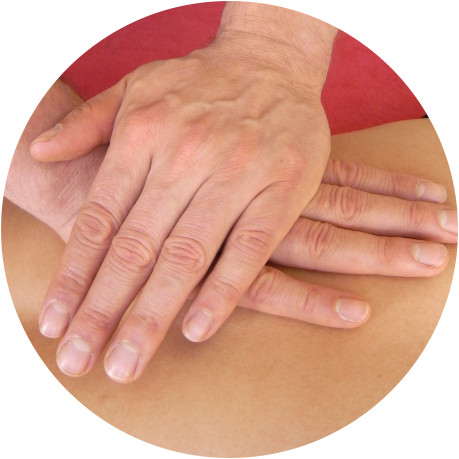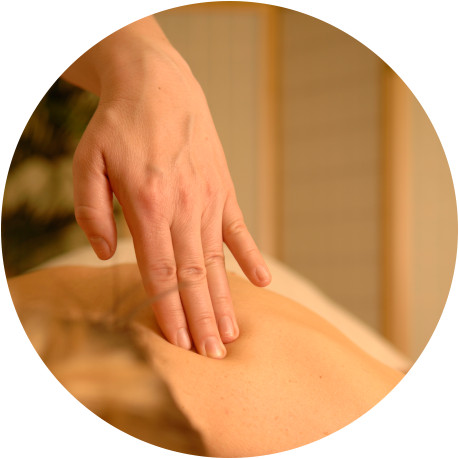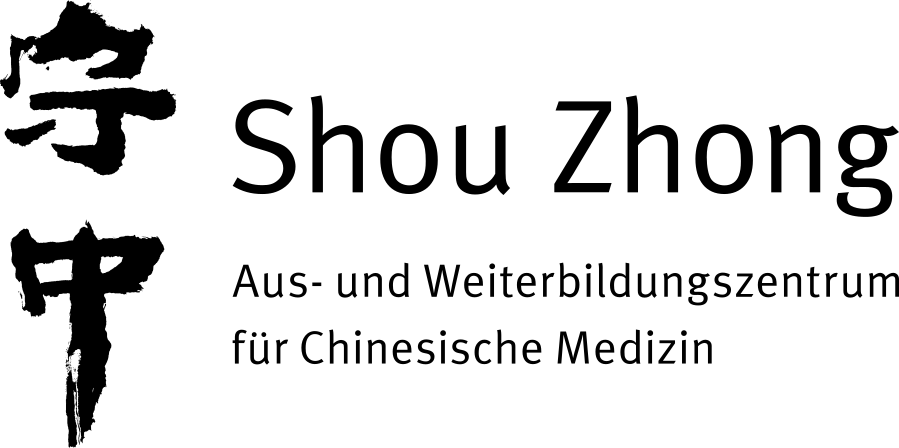Programs
Tuina Massage Therapie


Tuina Massage Therapy
Learn tuina massage therapy, a manual treatment method in Chinese medicine. Tuina offers you an autonomous treatment method that has matured over centuries. Techniques include: muscle massage, chiropractic manipulation, active and passive joint mobilization, acupressure, and many more along the meridians and their points.
Our program features a large practical part in order to get you treating hands-on. You learn all basic techniques and will use diagnostic tools to arrive at your diagnosis, as well as practicing the treatment of all body regions.
The main effect of Chinese healing massage resides in the movement of the vital substances qi and blood (xue). With tuina you can harmonize external and internal illness factors and stimulate the energy flow through the affected meridians, joints, and organs.
Our program is divided into a basic course and an advanced course and allows you to earn an AGTCM diploma/certificate.
The course’s language is german. B2 level is highly recommended.
For the participation:
Basic knowledge of Chinese medicine – You can acquire this in a pre-course over three weekends.
For the certificate:
Completion of 350 academic hours basic Chinese medicine education – You can acquire this at our school in a bit more than 1.5 years before or during the Tuina course. Please contact us for more information
Successfully completed basic course
Successfully completed advanced course
For the AGTCM diploma:
In addition to the certificate you need a German Heilpraktik license or approval as doctor of medicine
Pre-course – 1 month – 42 hours – 3 Weekends
Saturday 10 am – 6 pm
Sunday 10 am – 4 pm
Basic course – 7 months – 133 hours – 7 weekends
Friday 5:30 pm – 9:30 pm
Saturday 10 am – 6 pm
Sunday 9 am – 4 pm
Advanced course – 7 months – 98 hours – 7 weekends
Saturday 10 am – 6 pm
Sunday 10 am – 4 pm
In addition: 40 hours teaching practice
The dates for our next pre-course are:
The dates for the pre-course will be determined together with the participants. Registrations can still be made despite the basic course having started. The preliminary course can also take place parallel to the basic course.
The dates for our next basic course are:
29.11.- 01.12.2024
03.-05.01.2025
21.-23.02.2025
04.-06.04.2025
16.-18.05.2025
27.-29.06.2025
New dates for our next advanced course are:
29./30.11.2025
24./25.01.2026
21./22.02.2026
21./22.03.2026
18./19.04.2026
06./07.06.2026
20./21.06.2026
Axel Does is our head coach of tuina
Martina Walter und Christina Schenk are co-coaches for tuina
Annette Jonas is guest coach in the tuina advanced course
Pre-course
€675
€540 for AGTCM members or students of an AGTCM training center
Basic course
€2,288
€1,830 for AGTCM members or students of an AGTCM training center
Advanced course
€2,680
€2,140 for AGTCM members or students of an AGTCM training center

Basic Course
In our compact practical course you’ll gain basic tuina knowledge and skills, including techniques and their clinical applications over seven weekends. Practice makes perfect. So you’ll try out, practice, and repeat many routine clinical techniques on defined body parts. You’ll learn how you can diagnose frequently occurring symptoms well and adjust and modify therapy on an individual basis.
In class you’ll develop hand movements, treatment strategies, and specific indications for shoulder, back, or joint pain, muscle tension, spinal diseases, or traumatic incidents such as pulled muscles and sprains.
From the field of internal diseases we introduce you to treatment concepts for symptoms such as headaches, colds, dysmenorrhea, constipation, and diarrhea.
The aim of our course is for you to be able to use tuina safely and effectively on its own or in combination with acupuncture, moxa, or other manual therapies (shiatsu, osteopathy) in your daily practice.
The course concludes with a written and practical exam.
Tuina Basic Course Content:
Weekend 1 – Foundations I
Introduction to tuina theory (general, history, TCM)
Introduction to basic techniques (outline, classification)
Basic Techniques I (preparatory surface techniques)
Introduction to self-massage and strengthening exercises
TCM theory in tuina (musculotendinous meridians jing jin and luo mai)
Basic Techniques II (going deeper)
Structuring a tuina treatment (posture, economy, self-protection)
Diagnostics I (basics, inspection, function tests, posture assessment, intro to meridian diagnostics, neck diagnostics)
Basic Techniques III (tapping and clapping)
Basic neck treatment
Weekend 2 – Foundations II
Tuina theory (indicators, contraindicators, treatment principles, energetic effects)
Theory of acupressure
Self-massage, strengthening exercises, exercises to perceive qi, Basic Techniques IV (going deeper, vibratory techniques, acupressure, Mobilizations I, combinations)
Structuring a tuina treatment (treatment situation fundamentals)
Diagnostics II (palpation, meridian diagnostics, point diagnostics, determining energy flow, back diagnostics)
Basic back treatment
Weekend 3 – Application I
Introduction to basic treatments
Theory of pain reduction
Basic treatment of the leg posterior
Basic Techniques V (pain-reducing techniques, Mobilizations II, closing techniques)
Diagnostics III (posture assessment, spine checks)
Basic lower back treatment
Differentiation lower back pain (sciatica, sacroiliac joint pain)
Weekend 4 – Application II
Review basic back treatment
Basic treatment of the arms
Diagnostics IV (joints: status, mobility, function tests)
Bi syndrome, traumatology, arthritis
Basic Techniques VI (Mobilizations III and coordinated techniques)
Basic shoulder treatment
Differentiation between shoulder and arm pain (shoulder-arm syndrome, frozen shoulder, tennis elbow, golfer arm)
Weekend 5 – Application III
Basic neck treatment
Tension, torticollis, cervical spondylosis
Basic Techniques VII (shen-activating techniques)
Diagnostics V (face diagnostics)
Basic treatment of the head, face, chest
Differentiation headache
Weekend 6 – Application IV
Treatment structure (from diagnosis to treatment)
Basic techniques (qigong techniques)
Basic head treatment
Colds, allergic rhinitis, asthma
Diagnostics VI (stomach diagnosis)
Basic treatment of the chest, stomach, and leg anterior
Differentiation dysmenorrhea
Weekend 7 – Application V
Basic stomach treatment
Constipation/diarrhea
Full body treatment
Prevention, rehabilitation, wellness
Written exam
Practice inspection
10 additional hours of independent study of the techniques
Advanced Course
In our advanced tuina course you gain a deeper glimpse into the differentiation of symptoms and consolidate the basic techniques you’ve already assimilated in the compact course. You learn more special techniques for advanced practitioners, and you’ll be able to solidify and test the knowledge you’ve learned in the teaching practice. Here we’ve put together a highly practical lesson so you can further hone your style in the various techniques and solidify your diagnostic and treatment skills.

In class you’ll develop hand movements, treatment strategies, and specific indications for use for back, joint, and spinal diseases, general trauma therapy (pulled muscles, sprains), rheumatic disorders (arthritis), as well as neurological, gynecological and internal diseases.
You practice and review differentiated treatment procedures and diagnostic basics and learn mindfulness regarding economy and self-protection in physical involvement.
In this training course you’ll amass 40 lesson units of experience in the teaching practice. You can practice what you’ve learned in weekly patient treatments and observe the effects and treatment success.
The objective of our course is to empower and support you in assimilating and expanding on the wide spectrum of uses for tuina massage therapy. You’ll be ideally positioned to use tuina successfully in your own practice as a stand-alone treatment or to supplement your pre-existing methods.
Course Content:
Weekend 1
Review of previous tuina theory and practice
General traumatology – stages of trauma and treatment strategies, urgent assistance, emergency measures and complications, tissue injuries and joint rehabilitation using the following examples: sprained wrist, soft tissue injury in the shoulder girdle, ankle sprain
External uses of herbs (envelopes, baths, plasters) in traumatology and orthopedics
Scar treatment
Weekend 2
Tuina Theory I (prescribing individual treatment)
Supplemental methods (gua sha, ba guan fa, jiu fa, zhen fa, plum blossom hammer)
Enhanced Tuina Techniques I
Enhanced Tuina Diagnostics I
Orthopedics, Traumatology I (spine) – symptoms, causes, differentiation, therapeutic treatment concept using a selection of the following examples:
Cervical spine syndrome: local, radicular, pseudo radicular; functional, degenerative, posttraumatic
Cervical spondylosis / facet joint arthritis / bulging disc
Whiplash (cervical spine distortion)
Cervicocranial syndrome
Lumbar spine syndrome – local, radicular, pseudo radicular; functional, degenerative, posttraumatic
Discopathy
Sacroiliac joint – blockages and strains
Piriformis syndrome
Weekend 3
Enhanced Tuina Techniques II
Guiding patients in self-massage
Bi syndrome theory and classification (rheumatic disease)
Enhanced Tuina Diagnostics II
Orthopedics, traumatology (arthritis) – symptoms, causes, differentiation, therapeutic treatment concept using a selection of the following examples:
Coxarthropathy, such as arthritis and hip joint diseases
Gonarthropathy, such as arthritis and knee joint diseases
Strains of the calf muscles/Achilles tendinopathy/compartment syndrome and other afflictions of the lower extremities
Epicondylitis and other afflictions of the upper extremities
Weekend 4
Enhanced Theory of Physiology and Pathology for Women
Tuina in Gynecology and Internal Medicine I – symptoms, causes, differentiation, therapeutic treatment concept using a selection of the following examples:
Amenorrhea
PMS syndrome
Menopause
Pregnancy tuina
Mastitis, etc.
Cystitis
Enuresis
Weekend 5
Tuina Theory II (structure of prescribed treatment from diagnosis to treatment)
Enhanced Tuina Techniques III
Tuina in Neurology and Internal Medicine II – symptoms, causes, differentiation, therapeutic treatment concept using a selection of the following examples:
Hypertension
Vertigo
Apoplexy and paralyses
Sleeping disorders
Tinnitus
Weekend 6
Expanding upon Diagnostics III
Tuina in Internal Medicine III – symptoms, causes, differentiation, therapeutic treatment concept using a selection of the following examples:
Colds, allergic rhinitis, asthma, chronic bronchitis, painful sinusitis
Constipation, diarrhea, indigestion, etc.
Exam preparation
Weekend 7
Introduction to xiao er (pediatric) tuina
Written exam
Practical exam on a live patient with anamnesis and diagnosis
An additional 40 class hours of teaching practice and 20 class hours of case studies
The course culminates in a written and practical exam.
